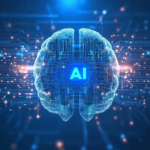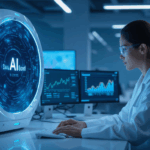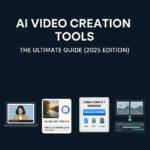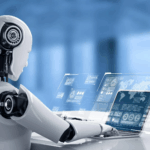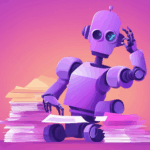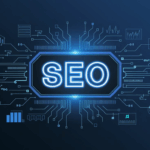The 2020s will be remembered as the decade when artificial intelligence (AI) shifted from futuristic hype to everyday reality. From writing tools and chatbots to robotics and healthcare solutions, AI became a central part of work, learning, and life. What once seemed like science fiction in the 2010s became normal across industries by the mid-2020s.
These AI breakthroughs 2020s changed the way we create, communicate, travel, and even regulate technology. They shaped business models, disrupted old industries, and opened new possibilities.
In this article, we’ll explore the 10 most important AI innovations of the 2020s — the breakthroughs that truly defined this decade and will continue shaping the 2030s.
Breakthrough #1: The Rise of Generative AI (ChatGPT and Beyond)
The single most defining AI breakthrough of the 2020s was the rise of generative AI. While artificial intelligence had existed in forms like recommendation engines and predictive analytics, the launch of ChatGPT by OpenAI in late 2022 marked a turning point. For the first time, millions of everyday users could interact with AI in natural language — asking questions, generating essays, writing code, and even holding conversations that felt surprisingly human.
But ChatGPT wasn’t alone. Soon, other major players followed:
- Anthropic’s Claude offered safer, conversational AI.
- Google’s Gemini (formerly Bard) integrated search, reasoning, and multimodal input.
- Meta’s LLaMA models empowered open-source communities.
Together, these systems democratised access to AI, transforming it from a niche tech into a mainstream utility.
Key Impacts of Generative AI
- Content Creation Revolution: Writers, marketers, and businesses could instantly generate blogs, captions, ads, and presentations.
- Boost in Productivity: Professionals used AI for drafting emails, summarising reports, and brainstorming ideas.
- Coding Assistance: Developers embraced AI pair programmers like GitHub Copilot, reducing time spent on repetitive code.
- Education: Students used AI tutors for learning languages, solving maths, and exploring concepts.
Generative AI essentially became the Swiss Army knife of the 2020s, applicable to nearly every industry.
Challenges & Controversies
Of course, this breakthrough wasn’t without issues:
- Concerns around plagiarism and misuse in schools and workplaces.
- Biases in training data leading to problematic outputs.
- Ethical debates on whether AI should replace creative or knowledge-based jobs.
Still, generative AI proved that human + machine collaboration could unlock creativity and efficiency at a scale never before seen.
Future Outlook
Generative AI is moving toward multimodal systems — capable of handling text, images, video, and audio simultaneously. OpenAI’s GPT-4o, Google’s Gemini 1.5, and Anthropic’s Claude 3 already show signs of where the 2030s will take us: universal AI assistants integrated into daily life.
Breakthrough #2: AI in Healthcare
If there’s one area where AI breakthroughs 2020s had life-changing impact, it’s healthcare. From drug discovery to diagnostics and patient care, AI accelerated progress at a pace that saved time, money, and even lives.
Key Innovations in Healthcare AI
- AI in Drug Discovery
- DeepMind’s AlphaFold mapped millions of protein structures, solving a decades-old problem in biology.
- Pharmaceutical companies used AI to identify potential drugs in months instead of years.
- Diagnostics & Medical Imaging
- AI models could scan X-rays, MRIs, and CT scans faster than doctors, often spotting early signs of cancer or fractures with higher accuracy.
- Startups deployed AI to predict heart disease and diabetes risks from routine check-ups.
- Personalised Medicine
- AI helped doctors recommend treatments based on genetics, lifestyle, and medical history.
- Patients received tailored care plans rather than one-size-fits-all prescriptions.
- Virtual Health Assistants
- Chatbot-style assistants answered health queries, scheduled appointments, and guided patients through recovery.
- In rural areas, AI-powered telemedicine bridged the gap between patients and specialists.
Benefits of AI in Healthcare
- Faster Results: What once took years in labs now took months.
- Higher Accuracy: Reduced human error in diagnostics.
- Global Reach: Made healthcare more accessible in developing nations.
- Cost Savings: Lowered research and operational costs in hospitals.
Challenges & Concerns
- Data Privacy: Patient health records are sensitive; misuse could be devastating.
- Bias in Training Data: AI trained on limited datasets risked misdiagnosing underrepresented populations.
- Ethics: Who is responsible if AI misdiagnoses a patient?
Future Outlook
The 2030s will likely see AI become a doctor’s indispensable partner — from predicting pandemics to creating fully AI-assisted hospitals. The blend of human expertise and AI precision will shape the future of healthcare.
Breakthrough #3: AI in Creative Industries
The 2020s weren’t just about productivity and automation — they were also the decade when AI became an artist, designer, and storyteller. Tools like DALL·E, MidJourney, Stable Diffusion, and Runway made it possible for anyone to create art, images, videos, and even music with nothing more than a text prompt.
What once required years of artistic training or expensive software was suddenly available to everyday users — democratising creativity in ways the world had never seen before.
Key Innovations in Creative AI
- AI Image Generation
- MidJourney & DALL·E: Turned written prompts into photorealistic or artistic visuals.
- Stable Diffusion: Open-source alternative that empowered custom models and niche communities.
- AI Video Creation
- Runway Gen-2/Gen-3: Generated cinematic-quality videos from text descriptions.
- Pictory & Lumen5: Converted blogs and webinars into engaging social clips.
- AI in Music & Audio
- AI composers like AIVA and Soundraw created background tracks.
- Descript allowed podcasters to edit audio by editing text transcripts.
Impacts on Industries
- Advertising & Marketing: Brands produced ads and visuals in minutes instead of weeks.
- Filmmaking: Indie creators began experimenting with AI-generated storyboards and effects.
- Art & Design: AI made professional design tools accessible to non-designers, sparking debates about originality.
For creatives, this meant faster workflows and more ideas. For businesses, it meant lower costs and higher scalability.
Challenges & Ethical Questions
- Copyright & Ownership: Who owns AI-generated art — the user, the company, or the AI?
- Job Displacement: Concerns among designers, illustrators, and video editors.
- Deepfake Risks: AI-generated media could be misused for disinformation.
Future Outlook
By the 2030s, AI won’t just support creativity — it will collaborate with human creators. Expect co-creation where artists and AI tools work together to push imagination further than ever before.
Breakthrough #4: AI-Powered Robotics & Automation
The 2020s also saw artificial intelligence step out of the digital world and into the physical world. By combining AI with robotics, industries ranging from manufacturing to logistics to home automation experienced dramatic transformations.
Key Innovations in AI Robotics
- Industrial & Warehouse Robots
- Amazon and other e-commerce giants deployed AI-powered warehouse robots to handle sorting, packing, and delivery.
- Collaborative robots (“cobots”) worked alongside humans in factories, increasing efficiency without replacing every job.
- Autonomous Delivery Systems
- Companies tested AI-driven delivery drones and robots, bringing packages, groceries, and meals directly to customers.
- Cities began experimenting with last-mile logistics powered by AI navigation.
- Everyday Robots
- Cleaning robots like robotic vacuums became smarter, mapping entire homes.
- AI-powered personal assistants (both digital and physical) helped with household tasks.
- Boston Dynamics & Beyond
- Humanoid and quadruped robots gained global attention for their agility, balance, and AI-driven adaptability.
Impacts on Industries
- Logistics: Faster deliveries and lower costs.
- Manufacturing: Increased output and safer workplaces as AI handled dangerous tasks.
- Healthcare & Elderly Care: Robots provided assistance to patients and the elderly.
- Hospitality: Restaurants and hotels began using robots for food delivery and cleaning.
Challenges & Concerns
- Job Displacement: Workers feared replacement in logistics and manufacturing.
- Safety Risks: Ensuring AI robots could operate in public spaces without accidents.
- Costs: High upfront costs slowed adoption in smaller businesses.
Future Outlook
By the 2030s, AI-powered robots may become as common as smartphones. Expect to see autonomous delivery fleets, AI healthcare assistants, and even household humanoid robots supporting everyday life.
Breakthrough #5: Natural Language Processing (NLP)
The ability for machines to understand, generate, and even reason with human language took extraordinary leaps in the 2020s. From GPT-3 to GPT-5 and beyond, Natural Language Processing (NLP) became the backbone of generative AI, powering everything from chatbots to voice assistants to translation apps.
Key NLP Innovations of the 2020s
- Generative Language Models
- OpenAI’s GPT-3 (2020) proved large language models could write essays, poems, and even code.
- GPT-4 and GPT-5 refined accuracy, context, and reasoning power.
- Multimodal AI
- Tools like GPT-4o and Gemini 1.5 could process text, images, and audio simultaneously, making interactions feel more human.
- Voice Recognition & AI Speech
- Models like Whisper (OpenAI) and Deepgram dramatically improved transcription and live translation accuracy.
- Text-to-speech systems like ElevenLabs created lifelike voices used in education, gaming, and marketing.
- Accessibility
- NLP helped break barriers for people with disabilities — e.g., AI that converts speech to text for the deaf or simplifies reading for those with dyslexia.
Impacts of NLP Breakthroughs
- Education: AI tutors provided personalised support in multiple languages.
- Business: Customer support chatbots reduced wait times and costs.
- Global Communication: Real-time translation enabled seamless international collaboration.
- Content Creation: Blogs, marketing copy, and reports could be generated instantly.
Challenges & Risks
- Bias: NLP models sometimes reflected biases in their training data.
- Misinformation: The ability to generate human-like text raised fears of AI-driven propaganda.
- Overreliance: Users risked depending too heavily on AI for decision-making and writing.
Future Outlook
By the 2030s, NLP will likely power real-time universal translators — bridging every language barrier. Combined with multimodal systems, the next decade will bring AI assistants capable of understanding tone, emotion, and context almost as well as humans.
Breakthrough #6: AI in Social Media & Marketing
The 2020s transformed social media from a manual grind into a data-driven, AI-automated engine. Businesses, influencers, and even individuals began relying on AI to create, schedule, optimise, and analyse their content.
Key Innovations in AI for Marketing & Social Media
- AI-Powered Content Creation
- Tools like Jasper AI, Copy.ai, and Writesonic helped marketers generate ad copy, social captions, and blog snippets in seconds.
- AI could even adapt tone — casual for TikTok, professional for LinkedIn, witty for Twitter (X).
- Scheduling & Automation
- Platforms like Buffer, Later.ai, and SocialBee allowed brands to schedule posts automatically, using AI to pick the best posting times.
- Analytics & Insights
- Sprout Social, Brandwatch, and Emplifi used AI to analyse engagement, track sentiment, and recommend what content to post next.
- Engagement Bots
- MobileMonkey and ManyChat automated Instagram DMs, Facebook Messenger chats, and even lead generation campaigns.
- Influencer Discovery & Trend Tracking
- Upfluence AI and Heepsy helped brands identify authentic influencers.
- TrendSpider Social spotted hashtags and topics before they went viral.
Impacts on Marketing
- Efficiency: Small teams could manage big-brand campaigns with AI assistance.
- Personalisation: Ads and posts were tailored for specific audiences, boosting conversion rates.
- 24/7 Engagement: AI chatbots ensured no customer message went unanswered.
- Scalability: Brands could publish across multiple platforms without extra manpower.
Challenges & Risks
- Over-Automation: Too much AI-driven posting risked making brands feel robotic.
- Data Privacy: AI tools analysing consumer behaviour raised compliance concerns.
- Platform Dependency: If TikTok, Instagram, or Facebook updated their algorithms, some AI tools became less effective.
Future Outlook
By the 2030s, expect hyper-personalised AI marketing — where every user sees unique content based on preferences, location, and even mood. AI will also likely take a bigger role in predictive marketing, forecasting what campaigns will succeed before they’re launched.
Breakthrough #7: AI in Transportation
Among the most visible AI breakthroughs 2020s was the shift in how people and goods move around. AI-powered self-driving technology, logistics systems, and traffic optimisation brought the world closer to safer, faster, and more efficient mobility.
Key Innovations in AI Transportation
- Self-Driving Cars
- Tesla Autopilot and Waymo advanced autonomous driving to new levels.
- AI handled lane changes, parking, and accident avoidance with increasing reliability.
- Smart Traffic Management
- Cities began using AI to control traffic lights, reducing congestion.
- AI-powered prediction models helped manage traffic flow during events and rush hours.
- AI in Logistics
- Companies like Amazon and FedEx used AI to optimise delivery routes and reduce fuel costs.
- Autonomous trucks tested long-haul delivery routes, cutting human fatigue risks.
- Public Transport AI
- Pilot projects launched AI-assisted autonomous buses and shuttles in several smart cities.
Impacts on Society & Industry
- Safety Improvements: AI reduced accidents caused by human error.
- Efficiency: Faster deliveries and smarter logistics lowered costs.
- Sustainability: AI-optimised traffic helped cut emissions.
- Accessibility: Autonomous vehicles offered mobility solutions for the elderly and disabled.
Challenges & Risks
- Safety Concerns: Accidents involving self-driving cars raised ethical and legal questions.
- Regulation: Governments struggled to set rules for autonomous driving.
- Public Trust: Many people remained hesitant to ride in fully autonomous vehicles.
Future Outlook
By the 2030s, AI could power fully autonomous transport networks. Expect widespread adoption of driverless taxis, drone deliveries, and AI-optimised cities where traffic jams become a thing of the past.
Breakthrough #8: AI and Cybersecurity
As digital systems expanded in the 2020s, so did cyber threats. From phishing scams to ransomware attacks, cybercrime became more sophisticated — and so did the tools to fight it. AI-powered cybersecurity emerged as one of the decade’s most important breakthroughs, offering real-time detection, predictive defence, and automated response systems.
Key Innovations in AI Cybersecurity
- Real-Time Threat Detection
- AI platforms like Darktrace and CrowdStrike identified unusual patterns in network activity, flagging cyberattacks before they spread.
- Fraud Prevention
- Banks and fintech companies used AI to catch fraudulent transactions in milliseconds, preventing billions in losses.
- Phishing & Spam Filters
- AI email filters became highly effective at recognising phishing attempts, saving businesses from human error.
- Automated Incident Response
- Security platforms began using AI to isolate compromised systems, contain breaches, and repair vulnerabilities without waiting for human teams.
- Cybercrime Detection
- AI monitored the dark web for leaked data, stolen credit cards, and suspicious activity.
Impacts on Businesses & Individuals
- Safer Online Transactions: Boosted confidence in e-commerce and digital banking.
- Reduced Downtime: Faster response times saved businesses from catastrophic data breaches.
- Cost Savings: AI reduced the need for huge cybersecurity teams.
- Global Security: Governments adopted AI for national cyber defence.
Challenges & Risks
- AI vs. AI Warfare: Cybercriminals also used AI to launch smarter attacks.
- False Positives: Over-sensitive AI sometimes flagged harmless activity as threats.
- Dependence on AI: Businesses risked becoming vulnerable if AI systems failed or were manipulated.
Future Outlook
By the 2030s, cybersecurity will be a battle of AIs — with defenders and attackers both using intelligent systems. Expect self-healing networks that fix vulnerabilities instantly and AI-driven security policies shaping every digital interaction.
Breakthrough #9: AI in Education
Education is one of the areas where AI breakthroughs 2020s created both excitement and debate. From personalised learning platforms to AI tutors and automated grading systems, AI has reshaped how students learn and how teachers teach.
Key Innovations in Education AI
- AI Tutors & Personalised Learning
- Khan Academy’s AI tutor (powered by GPT-4) provided students with instant, adaptive guidance.
- Language apps like Duolingo Max used AI to simulate real conversations for practice.
- Smart Content Generation
- Teachers began using AI to generate quizzes, lesson plans, and summaries.
- Students used AI tools to create study notes or simplify complex texts.
- Accessibility Tools
- AI-powered transcription and translation helped learners with hearing impairments or language barriers.
- Tools adjusted reading levels to make education more inclusive.
- Assessment & Feedback
- AI systems automated grading of essays and tests, giving faster feedback.
- Adaptive platforms tracked student progress, recommending extra practice where needed.
Impacts on Education
- Personalisation: Students learned at their own pace, with AI adapting to strengths and weaknesses.
- Accessibility: Global learners gained access to high-quality education at lower costs.
- Teacher Support: Educators saved time on repetitive tasks, focusing more on mentorship.
- Globalisation: AI-enabled multilingual tools broke down barriers in international learning.
Challenges & Concerns
- Overreliance: Students risked depending too much on AI for answers, raising concerns about critical thinking.
- Academic Integrity: Schools worried about plagiarism and AI-written assignments.
- Digital Divide: Students in underdeveloped regions lacked equal access to AI-powered tools.
Future Outlook
By the 2030s, expect AI-powered classrooms where each student has a personalised digital tutor, lessons adapt dynamically, and education becomes globally accessible. At the same time, balance will be key — ensuring AI supports learning without replacing the human element of teaching.
Breakthrough #10: Ethical AI & Global Regulation
While AI brought enormous innovation in the 2020s, it also raised serious ethical and regulatory questions. The decade saw the world grappling with how to use AI responsibly, fairly, and safely.
Key Developments in Ethical AI
- Responsible AI Frameworks
- Companies like Google, Microsoft, and OpenAI established internal AI ethics guidelines to reduce bias and misuse.
- “AI Safety” became a recognised discipline, with dedicated research teams.
- AI Bias & Fairness
- The public became aware of how biased data could lead to unfair AI outcomes in hiring, law enforcement, and healthcare.
- Pressure grew for transparency in how AI systems are trained and deployed.
- Global Regulation
- European Union’s AI Act (2023–2025) became the world’s first major regulatory framework, classifying AI systems by risk.
- The U.S., China, and India began drafting their own national AI policies.
- UN discussions emerged on global AI safety and governance.
- Public Awareness
- Deepfakes and misinformation raised alarms about AI’s misuse.
- Privacy debates intensified as AI collected massive amounts of personal data.
Impacts of AI Regulation
- Trust Building: Regulations encouraged transparency, improving public trust in AI.
- Innovation Limits: Stricter rules slowed experimentation for startups in some regions.
- Global Divide: Different regulatory approaches created uneven innovation landscapes worldwide.
Challenges & Concerns
- Balance: Governments struggled to balance innovation with safety.
- Enforcement: Ensuring compliance across international borders was difficult.
- Ethics vs. Profit: Companies faced pressure to prioritise responsible AI while competing in a fast-moving market.
Future Outlook
By the 2030s, ethical AI will likely become non-negotiable. Expect:
- Stricter global laws covering bias, transparency, and safety.
- Mandatory AI audits for businesses.
- A push for human-in-the-loop systems, ensuring humans remain accountable for AI decisions.
FAQs About AI Breakthroughs in the 2020s
1. What was the biggest AI breakthrough of the 2020s?
The rise of generative AI tools like ChatGPT was the most significant breakthrough of the decade, making AI mainstream for millions worldwide.
2. How has AI changed everyday life in the 2020s?
AI simplified tasks such as writing, designing, learning, and even shopping. From AI chatbots in customer service to personalised recommendations on streaming platforms, it became part of daily routines.
3. What industries were most impacted by AI breakthroughs 2020s?
Key industries include healthcare, education, marketing, transportation, and cybersecurity — all of which saw massive transformation.
4. Did AI replace jobs in the 2020s?
AI automated repetitive work, but it also created new opportunities in AI training, data ethics, and prompt engineering. Instead of replacement, most industries saw job reshaping.
5. What role will AI play in the 2030s?
The 2030s will likely bring multimodal, universal AI assistants, fully autonomous transport, and tighter global regulations to ensure safe use.
Conclusion
The 2020s will go down in history as the decade when AI transformed from niche technology into a mainstream driver of innovation. From ChatGPT revolutionising communication to AI in healthcare, robotics, marketing, and cybersecurity, these breakthroughs redefined how people live and work.
While challenges remain — including ethical concerns, regulation, and trust — the benefits of these AI breakthroughs 2020s are undeniable. They boosted productivity, expanded creativity, improved safety, and reshaped entire industries.
Looking ahead, the 2030s will be about refinement, responsibility, and integration. AI will become more natural, multimodal, and deeply embedded in society. The key will be ensuring that it remains ethical, inclusive, and beneficial for all.
👉 If you want to explore more about the most influential AI technologies shaping our future, stay tuned here at AI of the Decade — where we track the breakthroughs that matter most.

